
The Business of Fashion
Agenda-setting intelligence, analysis and advice for the global fashion community.

Agenda-setting intelligence, analysis and advice for the global fashion community.

In a striking sign of how hard Asia’s one-time luxury capital has been hit by Covid-19 and instability linked to pro-democracy protests, new data from Euromonitor reveals that Hong Kong’s luxury market has now been overtaken by Taiwan’s, a milestone that would have seemed inconceivable a decade earlier.
But as the repatriation of spending to the Chinese mainland accelerates and other would-be shoppers in the region are unable to travel, retail and tourism income aren’t the only worries for the city. Hong Kong is also losing its lustre as a corporate stronghold in the Asia-Pacific (APAC) region for many fashion and beauty brands.
“For luxury brands, Hong Kong’s contribution has pretty much halved today versus where it was three, four years ago,” said Erwan Rambourg, co-head of consumer and retail research at HSBC. “If you’re running an Asia business from what gradually will be [seen] more and more as a satellite rather than the core, that’s going to be an issue.”
For decades, multinational companies have set up regional headquarters in the city and built teams around executives based there, but several brands have recently decided to move their centre of gravity away from Hong Kong.
ADVERTISEMENT
If you’re running an Asia business from what gradually will be [seen] more and more as a satellite rather than the core.
In January, VF Corp, which owns Supreme and The North Face among others, announced plans to move its centre of brand operations to Shanghai and its Asian supply hub to Singapore. Following reports that it was sitting on plans to downsize its Hong Kong office, L’Oréal crowned Singapore its headquarters for the geographic zone spanning South Asia Pacific, Middle East and North Africa (SAPMENA) and will make the move in November.
Experts say the trend is likely to continue. “If I have to use my crystal ball, I believe that in the next five years, you will have more brand headquarters in alternative locations,” said Mario Ortelli, managing partner of luxury advisors Ortelli & Co. Already, data from Hong Kong’s Department of Census and Statistics revealed that the city’s number of regional headquarters decreased between 2019 and 2020 for companies from countries including France, the UK, Japan, Germany, Canada and Australia.
Meanwhile, the South China Morning Post reported that luxury brands including Versace and Bulgari were reducing headcounts in Hong Kong and shifting company assets to mainland China. VF Corp and Bulgari declined to comment; Versace and Givenchy didn’t respond to requests for comment.
It’s obvious that such moves are partly motivated by brands’ desires to be on the ground in their largest market of mainland China, or in the heart of the Southeast Asia region which boasts some of the region’s fastest growing economies. With travel restrictions still in force, it’s likely that some companies are waiting for borders to open so they too can join the exodus, with Shanghai and Singapore being the top two beneficiaries.
It doesn’t help that Hong Kong’s once robust retail ecosystem is lagging behind as other regional hot spots recover from the pandemic. Last week, official data revealed that although Hong Kong’s retail sales for March rose more than 20 percent year on year to $27.6 billion HKD (US $3.5 billion), performance still lagged well behind pre-pandemic levels.
Rather than managing mainland China or Southeast Asia markets from offices far from the centre, having an ear to the ground in each region’s respective fashion capital is a growing imperative for many brands. It helps that wages are generally lower in the mainland, save for executives who have been given an incentive to relocate, Ortelli added.
“[Brands are] really seeing how having that proximity allows for them to have the ability to be able to address what...this market actually needs,” said Iris Chan, a partner overseeing international client development at Digital Luxury Group.
However, not all brands are contemplating a move. Salvatore Ferragamo, for one, “is not considering moving its APAC headquarters from Hong Kong to Shanghai or elsewhere,” said chief executive Micaela le Divelec Lemmi. The brand did shift some employees and roles to Shanghai in the second half of 2020 to adapt to travel limitations and local restrictions, but not in anticipation of a future relocation; it declined to elaborate on its decision.
ADVERTISEMENT
You want to be closer to the customer that you target the most [and] you want to manage retail operations.
For many, however, moving headquarters to the mainland — or at least elevating their mainland office to be on par with the rest of the APAC function in the corporate hierarchy — is a long-overdue move accelerated by the global crisis. For years, both online and offline expansion has taken place across mainland cities. Beijing’s concerted efforts to boost domestic spending in the wake of the pandemic have only further diminished Hong Kong’s standing as a retail hub for mainland tourists, which made up the bulk of local spending pre-Covid.
“You want to be closer to the customer that you target the most and closer to where you have the majority of your retail operations,” said Ortelli. Mainland China’s post-pandemic rebound and domestic reopening — in contrast to Hong Kong’s continued gradual emergence from restrictions — sealed the deal. “[As a brand] you had more opportunities to move within [the mainland], across retail operations and logistics hubs. In Hong Kong, you’re stuck.”
The brunt of this shift of companies’ headquarters away from Hong Kong is being felt by the city’s commercial landlords. According to Savills, top tier office rents saw their largest annual decline in over a decade last year; the property consultancy forecasts that grade A office rents will decline by 5 to 10 percent this year.
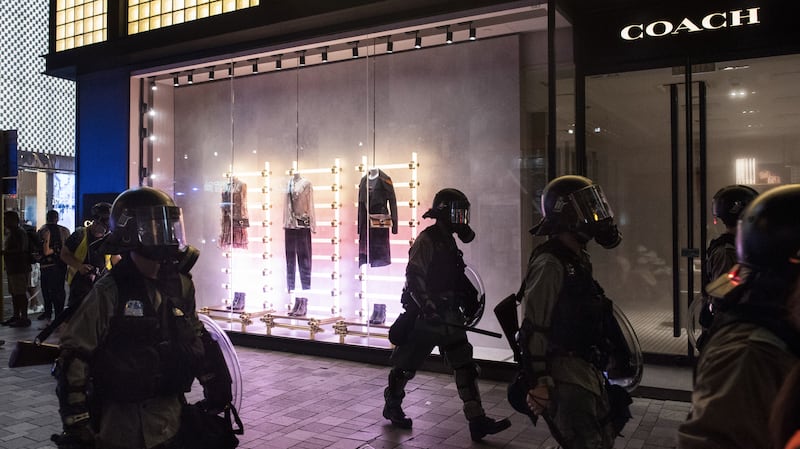
Brands aren’t the only ones under pressure to move. “A lot of brand managers who run Asia businesses from Hong Kong will likely be under pressure [from their companies] to eventually relocate to the mainland,” said Rambourg. It doesn’t help that the city’s “antiquated” expat packages — starting with paid-for schools and rents — amount to high expenses borne by companies that are becoming harder to justify.
As the global luxury market continues to localise, a robust corporate presence in key markets is becoming increasingly crucial. “Shanghai is the hub already for quite a few headquarters in the consumer industry,” said Rambourg. “But I think it will gradually become the hub for the luxury industry.”
The appeal is apparent: besides being a top-tier city, China’s fashion capital and home to events such as Shanghai Fashion Week and countless trade shows that draw global buyers and creatives, Shanghai boasts the world’s busiest port by tonnage and has its own stock exchange.
For brands looking to grow their businesses in Southeast Asia, Singapore’s strategic location, stable political environment, highly skilled talent pool and westernised legal, administrative and tax model has always made it a popular business hub. In Mainland China, the tech hub of Shenzhen, which is located adjacent to Hong Kong and alongside Guangzhou and Macau forms part of the Greater Bay Area, is also emerging as an option for global companies, said Chan, with proximity to some of China’s top tech firms, like WeChat, being a major draw.
Rambourg notes that, while the Chinese government is also trying to make Hainan into a tropical business hub through tax rebates, it is a less realistic option for luxury brands. “It’s a bit like if you were to say, would you put your headquarters in New York or in Hawaii? I’d rather work in Hawaii, but that’s not the point.”
ADVERTISEMENT
But even compared to cities like Shanghai, where brands can be much closer to their top customers, Hong Kong still has its perks. The city — which boasts a respected legal system and is Asia’s largest tax haven, according to the Tax Justive Network — is competitive in many ways and remains a strategically located international business hub that is home to a cluster of complementary business services relevant to both mainland China and the rest of Asia.
As it stands, China imposes a corporate income tax of 15 to 25 percent while Hong Kong implements up to 16.5 percent tax on profits. And despite Covid-19′s effect on the economy, Hong Kong’s stock exchange raised $11 billion from 59 new listings in the first half of 2020, coming second in IPO proceeds after the Nasdaq and before Shanghai.
Some brands and retailers are sticking with Hong Kong. Though it began expanding its corporate presence in Singapore last year and is looking into opening smaller branches in markets like South Korea, luxury resale platform Vestiaire Collective’s APAC headquarters and logistics hub will remain in the city.
“The secondhand luxury market is more competitive in Hong Kong due to the exemption of luxury taxation and customs tariff on imports,” said Natalie Lee, vice president of Vestiaire Collective’s APAC business. “Hong Kong is seen as a key supply market for the region where our logistics hub is based.”
For Chan, the real shift is less about where brands are moving their headquarters and more about how they operate internally to give the mainland Chinese market its due.
“I’m seeing [more] teams or companies pulling [the mainland] China market out of the APAC pie and having a focused team [and system] for it,” she said, adding that this has gradually changed over the past decade but again, has been accelerated by the pandemic.
Much of this is simply to keep up with China’s unique digital ecosystem and trends. “Finding [trends] out from an article two weeks later or even a month later is not the speed you want to be at,” she said. Going forward, Chan expects that mainland China teams will only continue to have a bigger say over global operations. “A global vision is still very important, but it needs to be better balanced [according to locale].”
时尚与美容
FASHION & BEAUTY
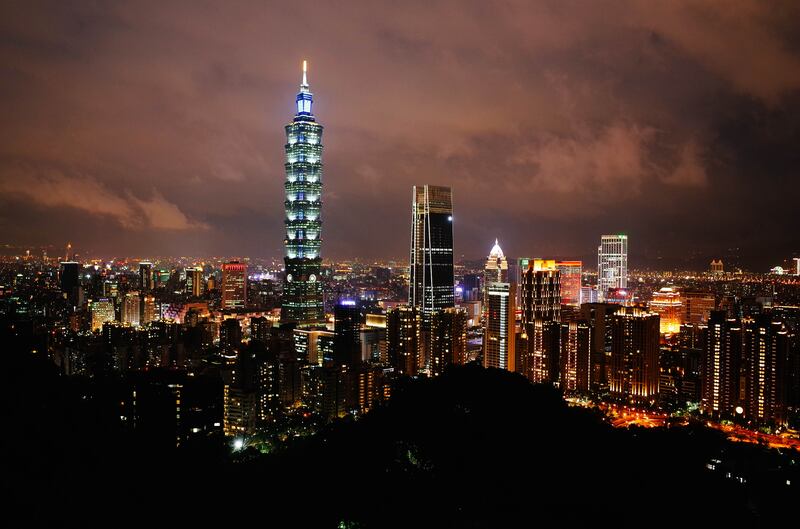
Affluent Shoppers in Mainland China, Taiwan, Drive Luxury Growth
While affluent shoppers in mainland China and Taiwan were the only ones globally to enjoy positive income gains last year, mainland China outpaced Japan as Asia pacific’s leading personal luxury market. Though the region as a whole saw sales drop by 7 percent in 2020, sales are expected to rise by a compound annual growth rate (CAGR) of 10 percent to account for 40 percent of the global sector by 2025. China and Korea are leading the region’s recovery; Euromonitor expects that the countries will see sales growth hit pre-pandemic levels by late 2021. The former will continue to drive growth for brands and make up 41 percent of personal luxury sales in the region by 2025. (BoF)
China’s Blind Box Toy Sensation Invests in Sneaker Resale Platform
Pop Mart, the Chinese toy brand that has ridden a craze for “blind boxes” to a $7 billion valuation and a buzzy $767 million Hong Kong IPO, has invested “tens of millions of yuan” in sneaker resale platform, Solestage, giving the latter a valuation of around 200 million yuan ($31 million), according to a report in New Consumer Daily. The strategic investment, the exact details of which remain undisclosed, is the first for Solestage, which was founded in 2013 in Los Angeles by three young sneakerheads and has since expanded to include stores in New York, Beijing and Shanghai, as well as plans for upcoming stores in Chengdu and Hangzhou. The platform has garnered a reputation over the years for its connections and ability to procure exclusive and hard-to-find products. This is the second investment Pop Mart has made in the fashion realm recently; last month it was also involved in a Series A funding round of $15 million in Hanfu fashion label, Shisanyu. (BoF)
Luxury Brands Descend on Hainan for Consumer Products Expo
The first China International Consumer Products Expo (CICPE), held in Haikou, the capital of Hainan Province, ended its four-day run today. More than 648 international companies exhibited more than 1,300 brands and attracted more than 30,000 buyers and professional visitors over the course of the event. According to a Global Times report, the fashion and lifestyle exhibition area, which included large-scale booths from luxury giants LVMH, Richemont and Kering, was the liveliest and most crowded area of the Expo. Many brands used the exhibition as an opportunity to introduce new brands and products into the Chinese market, with Shiseido, for example, launching its Ginza and Baum brands in China. Galleries Lafayette’s head of international development also used the platform to talk more about its plans to expand in China, including an upcoming third store in Guiyang and the potential for the group to have eight stores in China by 2025. (BoF)
科技与创新
TECH & INNOVATION
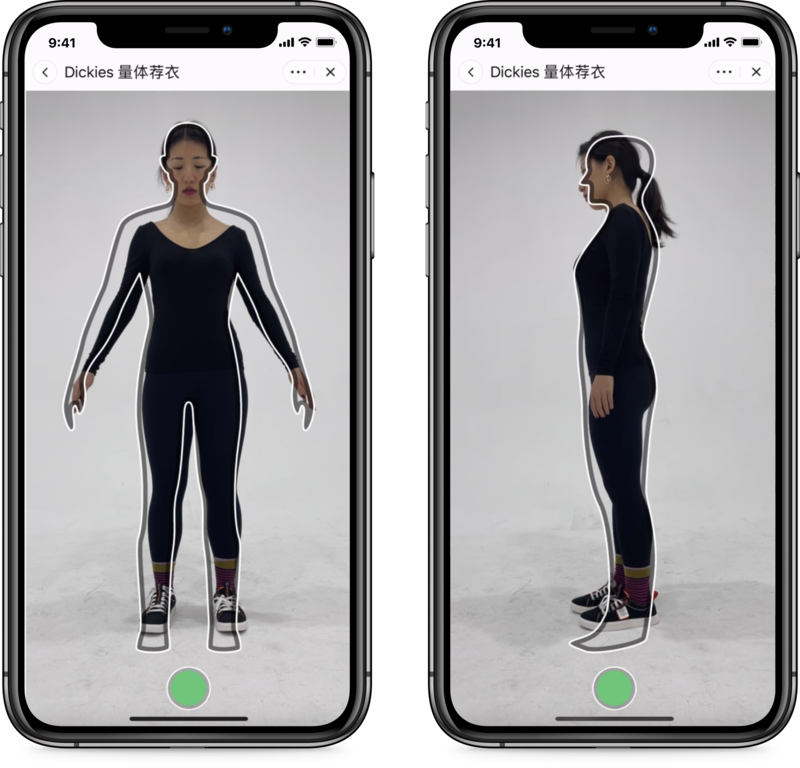
VF Corp Bets on AI Fitting Tech for Chinese Customers
Dickies, the American workwear-slash-streetwear brand owned by VF Corporation, has partnered with AI mobile body measuring specialists 3DLook to launch customised fitting on the brand’s Tmall Global storefront. The pilot program takes 80 measurement points from two smartphone photos uploaded by a shopper and recommends sizing based on this data. For fashion brands, sizing on cross-border platforms like Tmall has proven a hurdle to garnering sales, particularly for niche international brands as Chinese consumers are unfamiliar with their sizing and cross-border selling requires longer delivery times and more logistical hurdles to clear for returns. AI fitting solutions are one way to lessen this barrier for brands such as Dickies, which is also looking at the technology as a step towards shifting to a customer-centric, on-demand manufacturing business model. VF Corporation is also hoping to roll out similar programs across other brands in its portfolio. (BoF)
Reports: China Eyes Stricter Rules for Firms Seeking Overseas IPOs
The China Securities Regulatory Commission (CSRC) is considering tighter rules for companies seeking to list oversees or in Hong Kong, people familiar with the matter told Bloomberg. The guidelines will require companies to file listing documents locally before pursuing IPOs abroad, in order to avoid leaking sensitive information for national security reasons, the source added (the CSRC has denied this claim). If true, the news could throw a spanner in the works for Chinese giants like Douyin-owner Bytedance, that are seeking foreign listings. (Bloomberg)
消费与零售
CONSUMER & RETAIL
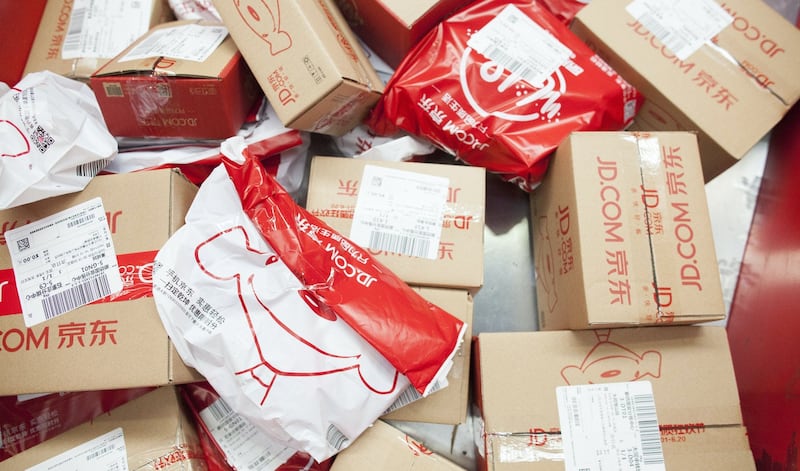
China’s Online Sales Rise 30% in Q1
In the period from January to March, China’s online retail sales went up 29.9 percent year-on-year to 2.81 trillion yuan ($434.5 billion), according to data released by the country’s Ministry of Commerce. Average first-quarter growth of online retail sales for the past two years stood at 13.5 percent, the data showed. Last month, China’s National Bureau of Statistics released data showing China’s economy surged 18.3 percent in the first quarter of 2021, versus a year ago. Retail sales grew by 34.2 percent in March, year-on-year, representing a slight improvement from the 33.8 percent increase for January and February. (BoF)
Swire’s Luxury Malls See Q1 Sales Rise Sharply in Mainland China
Shanghai’s Taikoo Hui mall saw retail sales jump 171 percent year-on-year and rental occupancy at 97 percent in the first quarter of 2021, with a similar sales increase of 169.6 percent year-on-year recorded by Guangzhou’s Taikoo Hui mall, which boasts rental occupancy of 100 percent, according to a first quarter operating statement released by Swire Properties. Sino-Ocean Taikoo Li in Chengdu saw first quarter sales rise 122.7 percent on the year and sales at Taikoo Li in Beijing’s Sanlitun district were up 113 percent year-on-year, with that property also reaching 100 percent rental occupancy this quarter. Though these sales jumps speak to the strength of China’s luxury market in major cities, they also come off the relatively low base of 2020′s first quarter, in which China battled the worst of its Covid-19 outbreak and luxury malls were largely devoid of their regular footfall for a significant period as customers stayed home. (BoF)
政治、经济、社会
POLITICS, ECONOMY, SOCIETY
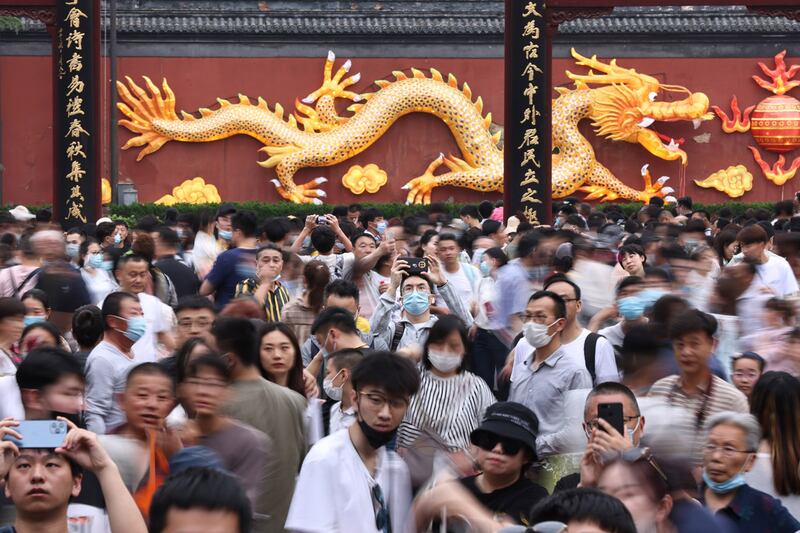
Chinese Travellers Come Out in Force for Labour Day Holiday
Chinese tourists made around 230 million trips over the country’s Labour Day holiday from May 1 to 5. This marks a year-on-year rise of 119.7 percent, and also represents 3.2 percent growth from pre-pandemic levels, according to official estimates. The country’s biggest online travel platforms recorded 30 percent more bookings for this year’s holiday period than in 2019, before the pandemic severely impacted travel over last year’s Labour Day holiday. Domestic tourism-related revenue over the break of 113.23 billion yuan ($17.5 billion) was up 138.1 percent year-on-year, but this only represents 77 percent of pre-pandemic levels. (BoF)
China’s Population Growing at Slowest Rate Since 1960′s
Beijing released the results of its latest census on Tuesday and revealed that the country’s overall population grew to 1.4 billion in the decade ending in 2020, a 5.38 percent increase. China’s average annual population growth, at 0.53 percent, was down from the 0.57 percent noted for the decade ending in 2010. This slowdown is no surprise and mirrors that of other countries like the US, but puts pressure on Beijing to boost incentives for marriage and procreation among the country’s younger citizens, many of whom are delaying settling down due to higher living costs and a lack of social mobility. In March, premier Li Keqiang announced that China would begin raising its retirement age and promote new fertility policies; upon the release of census data, officials said that changes are “achieving a positive result.” (The Guardian)
China Decoded wants to hear from you. Send tips, suggestions, complaints and compliments to our Shanghai-based Asia Correspondent casey.hall@businessoffashion.com.
With consumers tightening their belts in China, the battle between global fast fashion brands and local high street giants has intensified.
Investors are bracing for a steep slowdown in luxury sales when luxury companies report their first quarter results, reflecting lacklustre Chinese demand.
The French beauty giant’s two latest deals are part of a wider M&A push by global players to capture a larger slice of the China market, targeting buzzy high-end brands that offer products with distinctive Chinese elements.
Post-Covid spend by US tourists in Europe has surged past 2019 levels. Chinese travellers, by contrast, have largely favoured domestic and regional destinations like Hong Kong, Singapore and Japan.